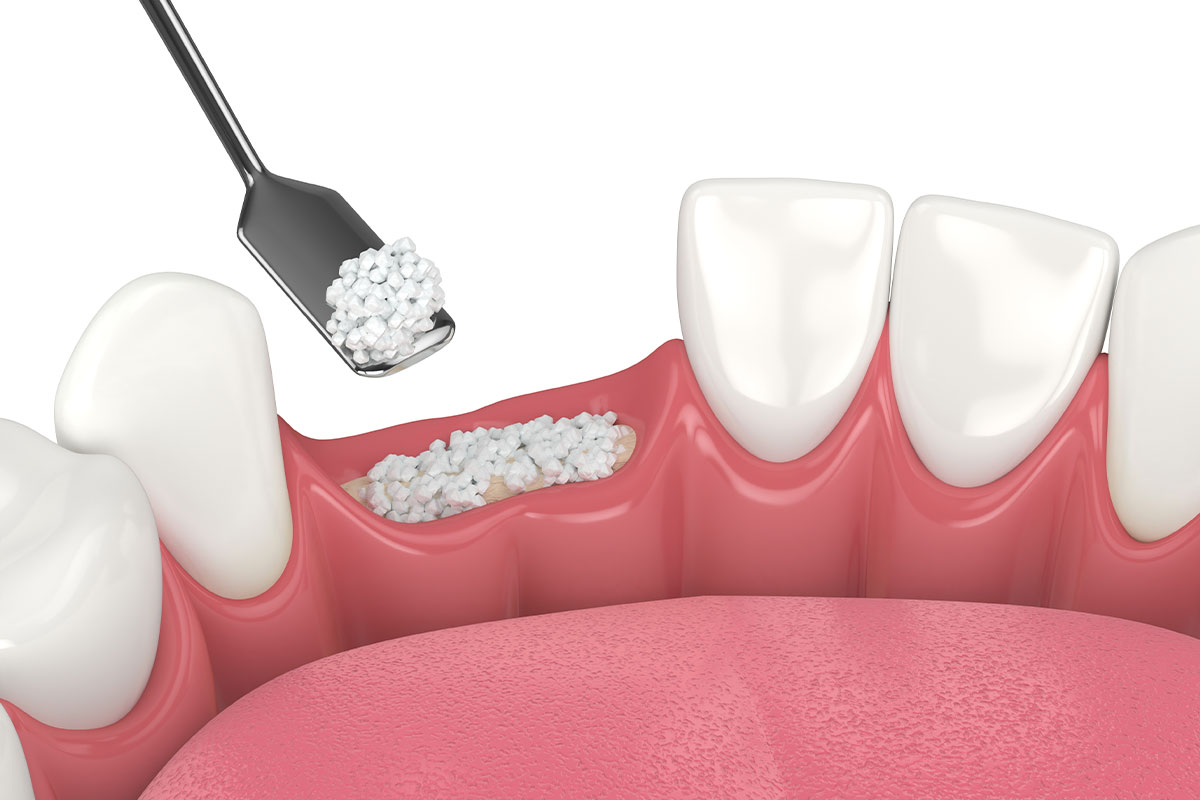Dental implants represent the pinnacles of teeth replacement capabilities. They allow us to replace the root structures of your missing teeth, so you can receive new teeth that are functionally and aesthetically indistinguishable from natural teeth. Sometimes, inadequate bone density can get in the way of dental implants — that’s where bone grafting enters in Lone Tree the picture.
You Need Strong Bone Density for Implants
A dental implant is a screw-like post drilled into the jawbone underneath the missing tooth’s location, which serves as a replacement for the tooth’s root. Once the implant is drilled into the jawbone, your body initiates osseointegration, which leads to the fusion of your bone tissues with the implant surface, making the implant a firmly rooted part of the dental anatomy. Since the implant must merge with the jawbone, you need strong bone density for implants.
Most people have enough jawbone density for dental implants. But some don’t. When you lose a tooth, your jawbone gradually gets reabsorbed into the body, especially in your upper and lower front teeth, where the socket walls are thin. Over time, the gradual loss of bone leads to insufficient bone density during implant surgery. Dr. Kayvan Fathimani, our world-renowned oral and maxillofacial surgeon, performs bone grafting to stimulate natural jawbone regeneration, so you can proceed with dental implants.

What is Bone Grafting?
Bone grafting in Lone Tree is a surgical procedure that involves placing bone grafting materials into the thin bone surrounding the empty socket. Your body responds to the bone grafting material by stimulating jawbone regeneration. Over the next 3 to 6 months, your jawbone density gradually increases, making you a suitable candidate for dental implants. Bone grafting can also be performed during tooth extraction to prevent the loss of jawbone, ensuring you remain a good candidate for dental implants in the future.
When Do You Need Bone Grafting
Immediately after tooth extraction to preserve the jawbone
After tooth extraction, if the walls of the empty socket are thick, they can naturally fill with bone within a few months. But if the socket walls are extremely thin, they can’t heal adequately. The socket in the upper and lower front teeth fall into the latter category, usually incapable of filling up with enough bone tissues to allow dental implants. Bone grafting may be performed during extraction to maintain the bone density you may eventually need.
If your tooth was removed several years ago
If your tooth was removed several years ago without bone grafting in Lone Tree, you might have inadequate bone density for implant placement. Over time, jawbone resorption leads to a narrow bone ridge that can’t support implants. In this case, bone grafting material can be placed next to the thin bone to stimulate natural regeneration. After approximately 3 to 6 months, you will have enough bone density at the site to receive dental implants.
If you have overly large or low sinus cavities
You may also need bone grafting if you have missing teeth in your upper jaw and your sinus cavities are too low, large, or extend into the tooth-bearing region. This is usually the situation in patients who have had the back upper teeth removed several years before considering implants. In this case, the oral surgeon may perform a sinus augmentation, which involves placing bone grafting material to elevate the sinus and restore bone density.

Schedule Your Consultation
Dr. Kayvan Fathimani is a triple-board-certified oral and maxillofacial surgeon specializing in cutting-edge dental implant techniques. He thoroughly evaluates your teeth and dental anatomy to identify the safest, most effective, and least invasive path to restoring your smile. Please schedule a consultation to explore your options for bone grafting in Lone Tree.

